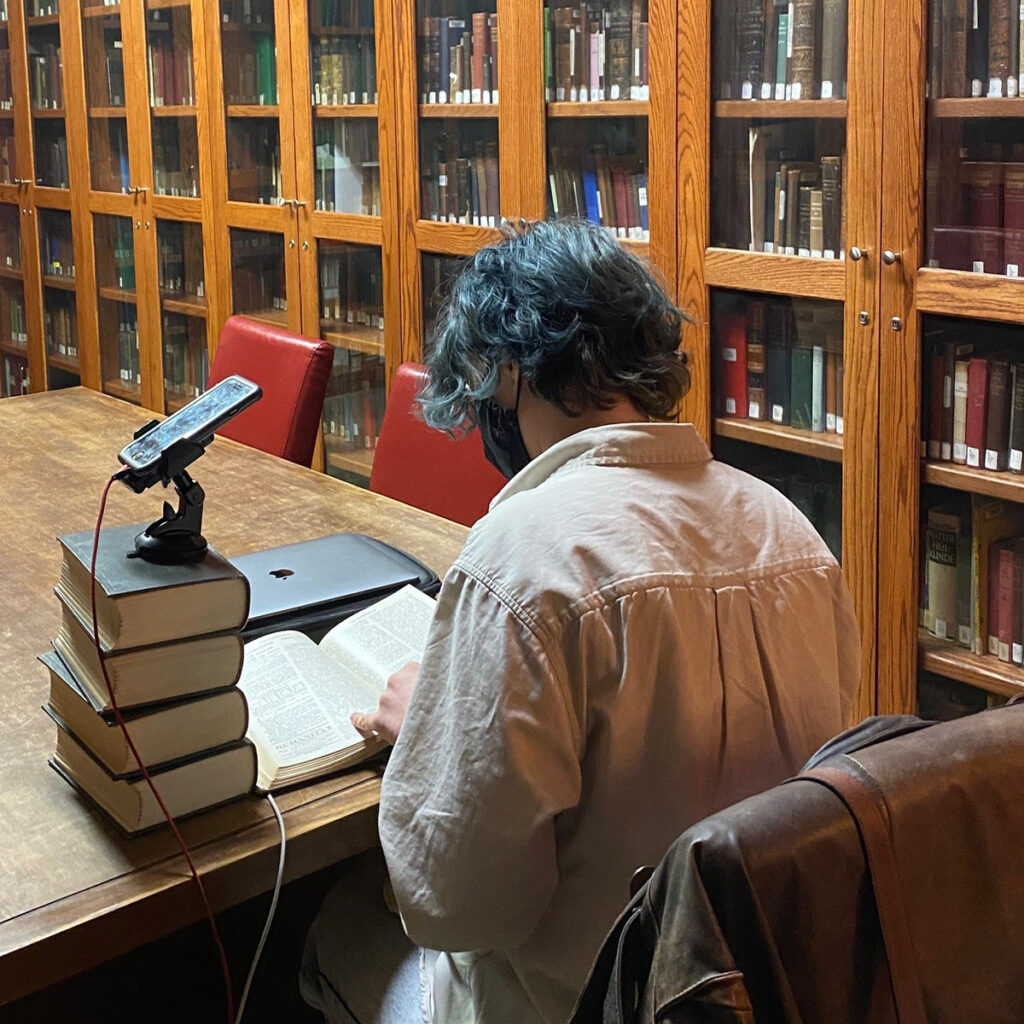A historian spent two weeks this past February in a windowless 250-square-foot room on NUNM’s campus. Hunched over texts, surrounded on four sides by the stitched leather bindings of books with spines ranging from worn to immaculate, she immersed herself in the tiny text of old manuscripts, patiently making her way through the towering stack of rare books piled high upon the table.
Laura Cremer is a PhD candidate from the University of Chicago, and an expert in 20th-century European and American histories. She’s travelled to Portland, Oregon, to visit the renowned Rare Books Collection at the Library of the National University of Natural Medicine. She’s come here to compile research for her dissertation, which focuses on the migration of early naturopathic practices and practitioners from Europe to America.
“I’m interested in how a set of practices that developed in Europe – the ‘water cure’ and other things – end up getting imported and transformed here into a broader popular movement that has a lot of cultural significance beyond the community of naturopathy specifically,” Laura said.
It’s a comprehensive scope, but she’s come to the right place. NUNM’s Rare Books Room houses about 2,200 books. Whether they’re old, first editions, out of print, or minimally distributed, you can bet that for any given book in the room, there’s perhaps only a few to a few dozen known copies in the entire world.

NUNM’s collection is exceptionally extensive.
“A lot of the original publications of some of these historically significant figures that I’m studying are collected here. There’ll be a few other libraries in the world that have a copy or two, but NUNM has a really cool collection that brings a lot of that together in a way that nowhere else really does.”
Among the threads Laura is following are Switzerland’s Monte Verità (the “Mountain of Truth”), American sanatoriums, the varying political visions of early naturopaths, American legislation of natural medicine, and how the idea that improving the self could lead to societal transformation – even revolution – has played out over time.
Laura is keenly aware of the more problematic parts of this history, noting how the appropriation of the lebensreform movement became the basis for eugenics.
“A lot of the scholarship has already explored how this goes in different directions politically [in Europe], but I’m interested in also looking at, so what happens to the American offshoots of this at the same time?”
As historians do, Laura sees the subject not as a snapshot in time but as a sequence of cause-and-effect events.
“One of the things that I’m interested in is not only how the specific kind of medical practices outlined in these texts have evolved over time, but how the history of the water cure and other naturopathic medical practices was involved in creating everyday consumer products that we use right now – businesses that are still around, the ways that we think about things like wellness and diets, exercise and health in popular culture that we don’t necessarily associate with this history that goes back to these specific figures in Germany.”
It’s an interesting tie-in to America’s capitalist economy. She notes that, while she’s still learning about the legal exclusions early natural medicine practitioners faced in the U.S., many found more lucrative avenues via business ventures rather than the pursuit of medical licensure.
“Maybe there’s a story of how legislation around medical practice with this generation ends up pushing people into working in food manufacturing and publishing.”
Of her work environment at NUNM, Laura is enamored.
“The librarians here have been super helpful. I’ve really loved getting to work in the space where all this work is collected.”
So, what has she taken away from all of this so far?
“History is fascinating to read because it’s full of stories, but it’s also really important to understanding the present. It’s one of the best ways we can unpack events and the institutions that are around us. For me personally, one of the reasons this kind of project is interesting is because we have these conversations in the present about something like self-care, versus caring for others. Part of what is interesting about some of these early figures is that they have ideas about transforming the self, what doing certain kinds of physical or mental care practices, the way that’s supposed to transform society. I think it’s [an idea] that’s sort of implicit in a lot of the ways we think about caring for the self now, but maybe not fully explored. Looking back at what these original theories offered is also a chance to say, OK, well, what parts of their vision for how this is supposed to work do we actually want to endorse or claim?”
Of course, being an historian comes with other perks, like traveling across the country to encounter the past through texts and artifacts in new and unexpected places. Being a first-time visitor to Stumptown, Laura has enjoyed exploring the city.
“I really like Portland so far, just walking around it. Everything here is covered in moss – aesthetically it’s very charming. Maybe it’s not good for the structural integrity of the buildings . . . but it’s very charming!”